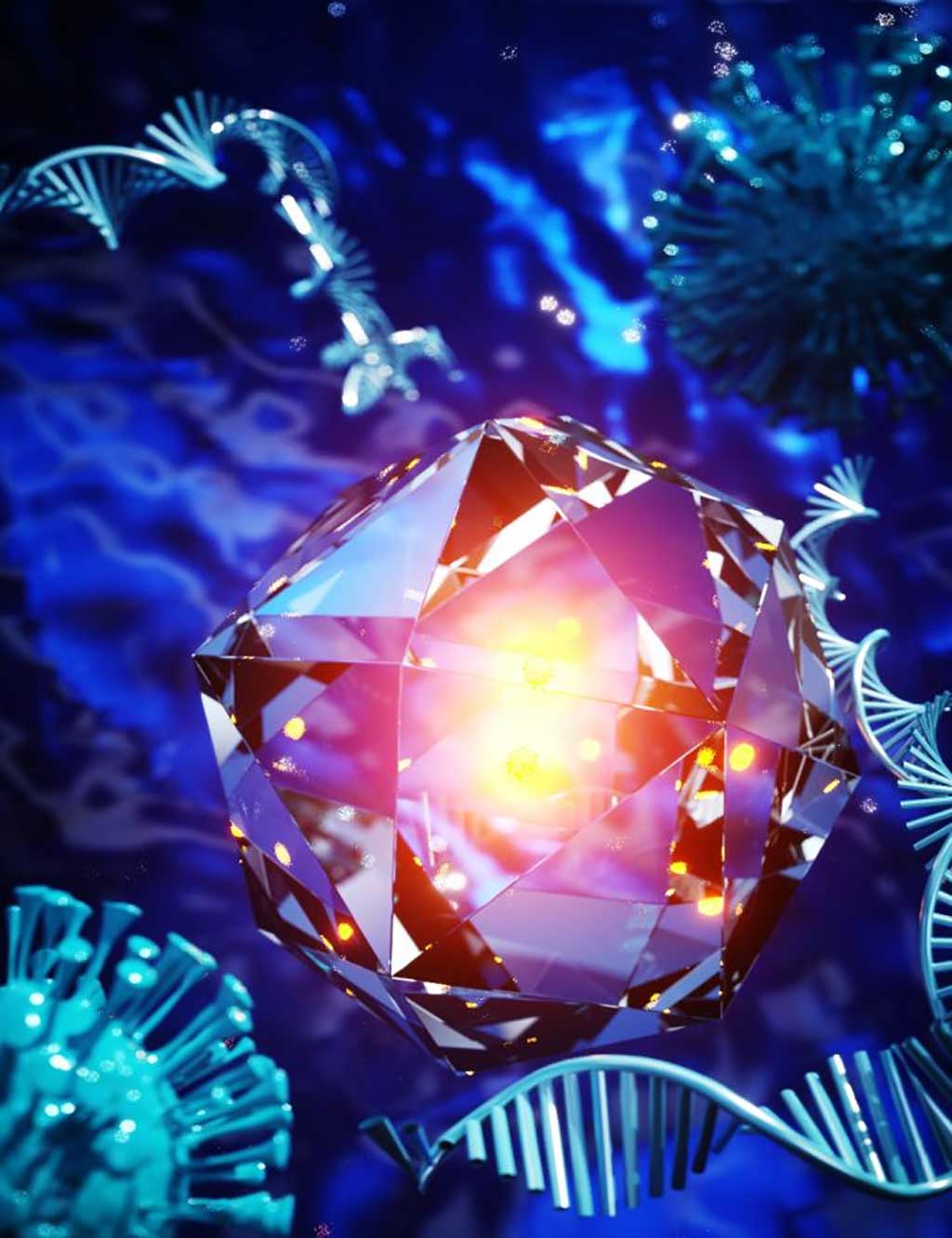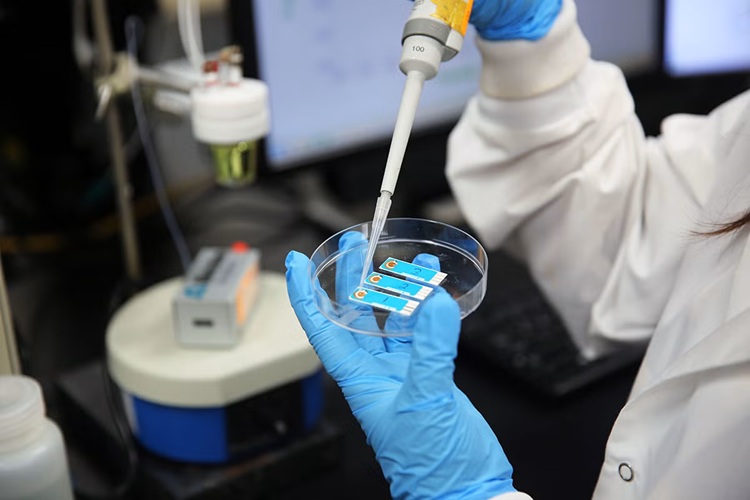Nanodiamonds Dramatically Boost Immunoassay Sensitivity
By LabMedica International staff writers
Posted on 08 Dec 2020
Incorporation of a specific class of nanodiamond into lateral flow immunoassays was shown to increase the sensitivity of this method by at least five orders of magnitude.Posted on 08 Dec 2020
Nanodiamonds or diamond nanoparticles are diamonds with a size below one micrometer, which are commercially produced by detonation synthesis. A class of fluorescent nanodiamonds containing nitrogen-vacancy defects has attractive properties for in vitro biosensing, including brightness, low cost, and selective manipulation of their emission.

Image: An artist`s conception of nanodiamonds used for in vitro diagnostics (Photo courtesy of Ella Maru Studio, University College London)
Investigators at University College London (United Kingdom) studied fluorescent nanodiamonds as an ultrasensitive label for in vitro diagnostics, using a microwave field to modulate emission intensity and frequency-domain analysis to separate the signal from background autofluorescence, which typically limits sensitivity. Since the quantum properties of fluorescent nanodiamonds allow their emission to be selectively modulated, the signal can be fixed at a set frequency using a microwave field and can be efficiently separated from the background fluorescence.
Using lateral flow immunoassay as the experimental system, the investigators achieved a detection limit of 8.2 × 10−19 molar for a biotin–avidin model, 100,000 times more sensitive than that obtained using gold nanoparticles. Furthermore, single-copy detection of HIV-1 RNA could be achieved with the addition of a 10-minute isothermal recombinase polymerase amplification step. This method was then demonstrated using a clinical plasma sample with an extraction step.
Senior author Dr. Rachel McKendry, professor of biomedical nanotechnology at University College London, said, "Our proof-of-concept study shows how quantum technologies can be used to detect ultralow levels of virus in a patient sample, enabling much earlier diagnosis. We have focused on the detection of HIV, but our approach is very flexible and can be easily adapted to other diseases and biomarker types. We are working on adapting our approach to COVID-19. We believe that this transformative new technology will benefit patients and protect populations from infectious diseases."
The next step will be to adapt the assay for use a smartphone or portable fluorescence reader, which would allow the test to be performed in low-resource settings.
The use of nanodiamonds to increase the sensitivity of lateral flow assays was described in the November 25, 2020, online edition of the journal Nature.
Related Links:
University College London














